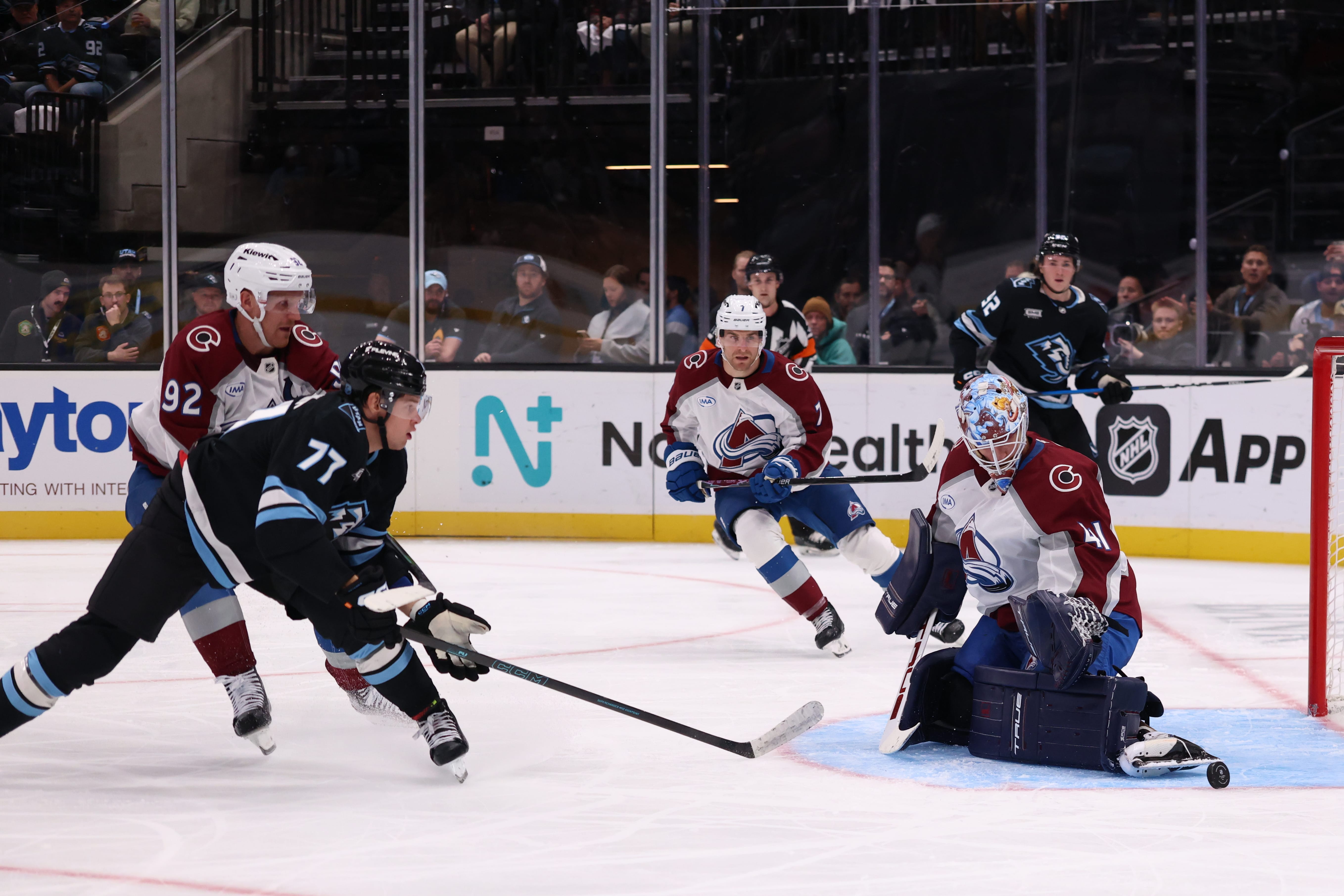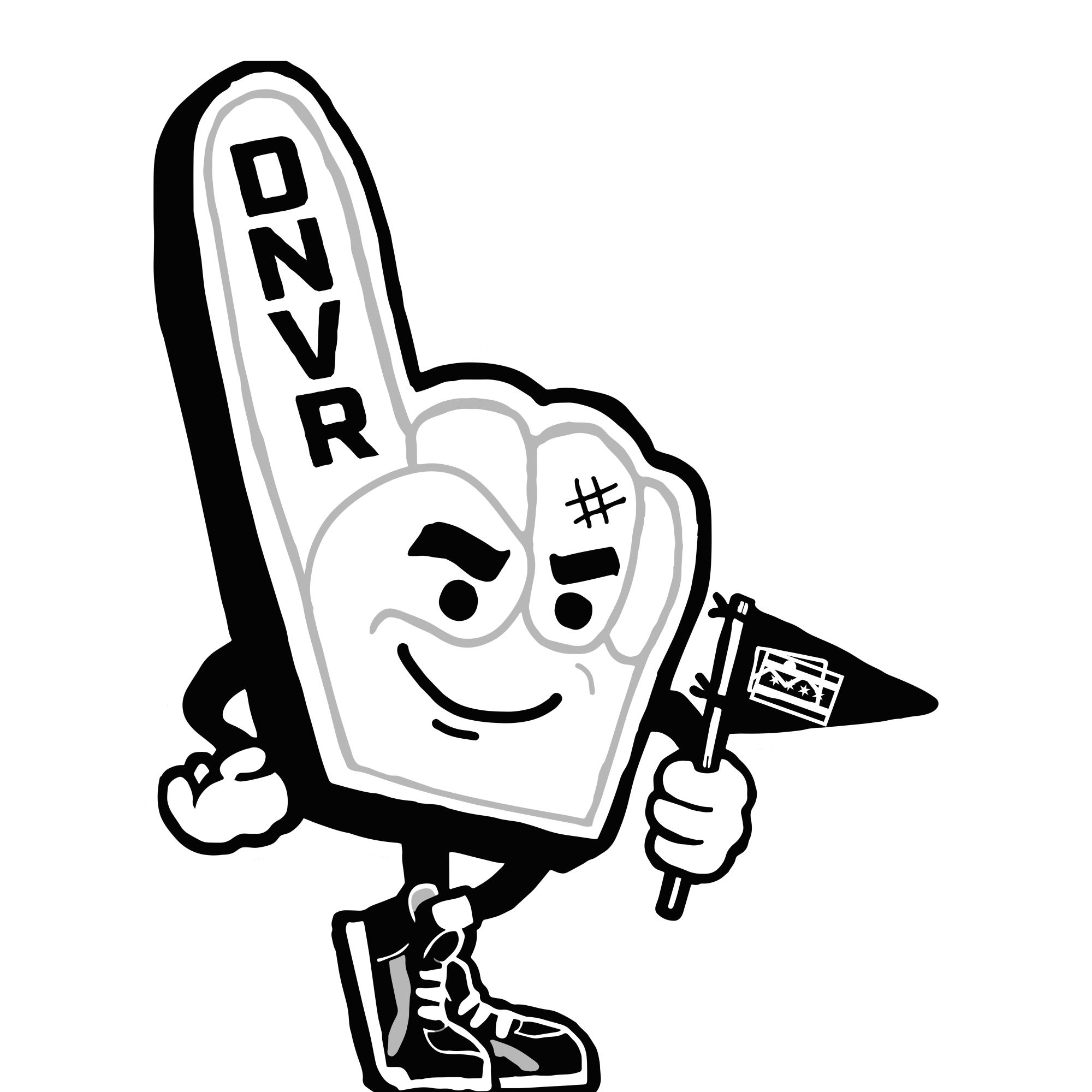© 2025 ALLCITY Network Inc.
All rights reserved.

In my eyes, there are two ways you can look at this game:
The Colorado Avalanche have, for the most part, been the better team through seven games. After four straight games of taking two points comfortably, they suddenly look horrible against the Utah Mammoth (again). Why are they so bad?
Or…
The Colorado Avalanche have, for the most part, been the better team through seven games. After four straight games of taking two points comfortably, they had an uncharacteristic bad start and, by the end of the game, looked more like themselves. They’re fine.
After talking about this game for an hour and having a night to sleep on it, I’m inclined to lean toward the latter.
But, regardless of which way you lean, there is one consensus to be drawn from tonight: It was bad.
If this were grade school and each player was being scored on their performance tonight, there is not a single person on this Avalanche roster who would receive an A. Not one. To put it bluntly, the eye test for most of this game was horrendous. Turnovers, missed passes, and poorly executed sequences led to a very sloppy game in all three zones of the ice. When looking at advanced stats, there are diamonds to pull from the rough, and most of them came from the third period. When put that way, it’s still not an ideal game for the Avalanche.
Let’s talk about that overturned goal
Yes, all technicalities aside, Nathan MacKinnon was offside when the line change was being initiated.
Rule 83 in the rulebook details all of the technicalities regarding the offside rule. According to the situation room in Toronto, the specifics from this challenge were drawn from 83.2, which states:
“Any action by an attacking player that causes a deflection/rebound off a defending player in the neutral zone back into the defending zone (i.e. stick check, body check, physical contact), a delayed off-side shall be signaled by the Linesperson.”
This is all good and well until you read the explanation that was listed before the quoting of the rule (in part) above.
“Video review determined that the actions of Valeri Nichushkin caused the puck to enter the Utah zone while Nathan MacKinnon was in an off-side position.”
“The actions of Valeri Nichushkin.” That’s it. The actions of Nichushkin against Dylan Guenther forced the puck to enter the zone.
Yet, he didn’t touch the puck.
Nichushkin did nothing against Guenther, who found possession of the puck. The only thing Nichushkin is guilty of here is an aggressive forecheck, which is exactly what you should want to see in a game like this.
I bring this up because this is also written in rule 83.1:
“If a player legally carries, passes or plays the puck back into his own defending zone while a player of the opposing team is in such defending zone, the off-side shall be ignored and play permitted to continue.”
Nichushkin’s stick does not touch the player or the player’s stick at all during this call (I would understand this call much more if he did), nor does he touch the puck until after it has fully crossed the blue line, thanks to a wayward touch from Guenther… Meaning, regardless of MacKinnon’s positioning when exiting the ice, this play should have 100% been allowed. Captain Gabe Landeskog has already registered a point this season, but man, a goal would’ve been nice.
Martin Necas Masterclass
Don’t be misguided by this header, Martin Necas was… not great in this game. But I think there is something to be taken from his ability to learn and improve between periods.
The good news here: Necas was at 50% in SH%.
The bad: Necas only registered two shots, and his shot attempts, which don’t count on the scoresheet at the end of the day, weren’t much better.
From a guy who is doing his best to earn a hefty payraise following this season (and has done a great job so far), this was very obviously not his night. From the player with the third-most minutes of ice time (22:04), it’s unacceptable.
If it’s a game like this every blue moon that brings down Necas’ pricetag at the end of this year, I can’t say I’m entirely upset, especially when it wasn’t just him having an off-night. At the same time, getting a full 60 minutes from him in a game like this could’ve changed the tide immensely.
The thing that saved Necas (and others, quite frankly) was slowing down and simplifying his game. Based on the eye test, conclusions can be drawn that a lot of self-reflection happened during the second intermission. Right out of the gate to start the third, you see a completely different Marty.
I am the biggest champion of Necas’ confidence and how dangerous it can be, and has been, for this team. His ability to carry the puck is unrivaled by many players in the league. With that said, there’s an argument to be made for getting too fancy with it and reading the room as to when it’s better or worse to break out moves like his. By the third period, it seemed like he had learned to do exactly that and had gotten back to simply what made him a good hockey player instead of an elite one. Once he got there, the superstar we all know and love started to shine through once again.
Though by the time he and others did, it was too late. Getting that to activate earlier has been key in their wins so far.
A conversation needs to be had about overtime
Again, in most cases, Martin Necas should be touted as an elite player. When put on a line with Nathan MacKinnon, that line becomes infinitely more dangerous. There’s no question about that, especially in a 5-on-5 situation.
In a 3-on-3 overtime scenario, throw that out the window.
Overtime is a game of possession. Good teams can maintain possession for the entire five minutes if they don’t score in that time, and dominate in that time. But, as the team without possession, there needs to be a certain level of defensive skill on the ice besides the singular defender.
Necas is elite during overtime. He’s spent his career so far making a name for himself as an overtime king. On the other side of things, Necas is not known for his defensive ability.
To that same effect, neither is MacKinnon.
Some sort of happy medium needs to be found in overtime situations to keep control, or even simply provide sound defense. Putting two guys who are not apt to early or on-time backchecks is not the answer.
Putting Brock Nelson out to win the draw was a smart move, no question, but Nichushkin, Nelson, and Drury would have been much more sound options. I’d even wager that if it is Nichushkin instead of MacKinnon deployed at first, we’re looking at a different result and a much more positive mindset heading into a hefty matchup against the Carolina Hurricanes.
Avs Postgame Pod
Comments
Share your thoughts
Join the conversation



